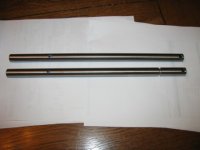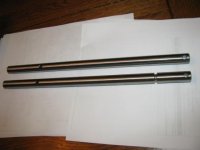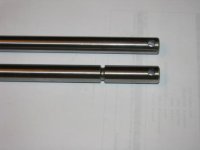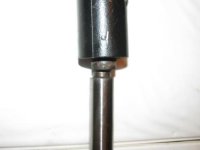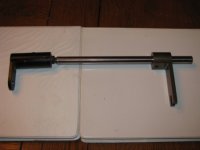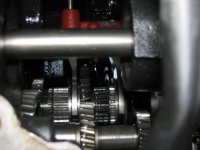mjncad said:Richard:
Glad to hear you got your rig back online without having to split the tractor. Should mine ever punk out like your did; it's a relief to know the repair can be done at home should I need to do it, and that the redesigned forks work better along with your machinist's improved shaft and lever.
Based on what you describe of the replacement lever you received from JD; it sounds like JD outsourced replacement parts manufacturing to our good buddies in China. That's a heck of a difference in dimensions you measured.
Matt
Good morning, Matt --
It is important to note that only the shift shaft can be replaced by removing the top plate -- to install the improved forks, the tractor still has to be split (Note the enclosed "shiftforks" picture -- the body of the forks is the red unit). Once I ascertained that my shift shaft could be replaced via the top, my next step was to carefully inspect the shift forks. I could find no evidence of any damage; they weren't bent, and the suction tube filter had no shavings of any kind, nor did the magnetic plug in the bottom of the case. So, at that point, I concluded that I didn't need the fork replacement. The smoothness and ease of shifting after reassembly provided further confirmation that there is no need for the improved forks.
On the dimensions of the JD shaft, I think that the machinist was right: I received a shaft which didn't get the polishing that it needed in the last step in the production process. I have enclosed a series of pictures that illustrate the original shaft's problems very clearly.
The first shows the newly-made shaft (no O-ring groove) versus the factory shaft (O-ring groove). The one that is called "originalfactoryshaft," in conjunction with "closeupofbreakpoint" clearly shows how easily the lever exerts tremendous force on the O-ring groove -- that is the problem with the transaxle as designed.
Richard
